Do you ever wonder why your furry friend seems to be scratching excessively, experiencing digestive issues, or displaying other unusual symptoms? Much like humans, dogs can also suffer from food allergies. As a responsible pet owner, it’s crucial to understand the ins and outs of food allergies in dogs to ensure their health and well-being. In this comprehensive guide, we’ll delve into everything you need to know about food allergies in dogs, from identifying symptoms to managing and preventing them effectively.
Contents Overview
Understanding Food Allergies in Dogs
Food allergies in dogs occur when their immune system overreacts to certain ingredients in their diet. Unlike food intolerances, which typically involve digestive issues, food allergies in dogs trigger an immune response, leading to a range of symptoms. These allergies can develop at any age and may stem from various dietary components, including proteins, grains, dairy, and even certain additives or preservatives.
Common Symptoms of Food Allergies in Dogs
Identifying the symptoms of food allergies in dogs is essential for timely intervention and management. These allergies can manifest in various ways, affecting different systems of the body. Here’s a detailed breakdown of the common symptoms of food allergies in dogs:
- Itchy Skin (Pruritus):
- Dogs with food allergies often experience intense itching, which can lead to scratching, licking, or chewing of the skin.
- The itching may be generalized or localized to specific areas of the body.
- Constant scratching can result in skin abrasions, hair loss, and secondary infections.
- Ear Infections or Inflammation:
- Food allergies can contribute to chronic ear infections or inflammation in dogs.
- Symptoms may include redness, swelling, discharge, odor, and discomfort in the ears.
- Dogs may shake their heads or scratch at their ears excessively due to irritation.
- Digestive Issues:
- Food allergies can cause a range of gastrointestinal problems, including diarrhea, vomiting, and excessive gas.
- Diarrhea may be watery, mucous-like, or contain blood, depending on the severity of the allergic reaction.
- Vomiting may occur shortly after eating or several hours later, and it may be accompanied by lethargy or abdominal discomfort.
- Excessive gas or flatulence is another common symptom of food allergies in dogs.
- Skin Problems:
- Dogs with food allergies may develop red, inflamed skin or hot spots (acute moist dermatitis) due to excessive scratching or licking.
- Hot spots are painful, moist lesions that can develop rapidly and require prompt treatment to prevent further irritation and infection.
- Skin problems associated with food allergies may be localized to certain areas of the body or affect the entire coat.
- Chronic Anal Gland Issues:
- Food allergies can contribute to anal gland problems in dogs, such as impaction, infection, or inflammation.
- Symptoms may include scooting, excessive licking of the anal area, foul odor, and discomfort during bowel movements.
- Chronic anal gland issues often require veterinary intervention for proper management and relief.
- Bald Patches or Hair Loss:
- Hair loss or bald patches may occur in dogs with food allergies, particularly in areas where they excessively scratch or lick their skin.
- Persistent scratching or rubbing can damage the hair follicles and lead to localized or generalized hair loss over time.
- Hair regrowth may be delayed until the underlying food allergy is effectively managed.
- Recurrent Skin Infections or Pyoderma:
- Dogs with untreated food allergies are prone to recurrent skin infections, including bacterial pyoderma or yeast overgrowth.
- Symptoms may include redness, swelling, pustules, crusts, and foul odor in affected areas.
- Recurrent skin infections can exacerbate itching and discomfort, further compromising the dog’s skin health.
Diagnosing Food Allergies in Dogs
Diagnosing food allergies in dogs can be complex, as the symptoms often overlap with other health conditions. Veterinary expertise is crucial for accurate diagnosis and effective management. Here’s an in-depth explanation of the various methods used to diagnose food allergies in dogs:
- Clinical History and Physical Examination:
- Your veterinarian will begin by taking a thorough clinical history, including details about your dog’s diet, symptoms, and medical history.
- A comprehensive physical examination will be conducted to assess your dog’s overall health and identify any visible signs of allergic reactions, such as skin inflammation or ear infections.
- Elimination Diet Trial:
- An elimination diet trial involves feeding your dog a novel protein and carbohydrate source that they haven’t been exposed to before.
- Common novel protein sources include venison, duck, rabbit, or novel plant proteins, while novel carbohydrate sources may include sweet potatoes, peas, or tapioca.
- During the elimination diet trial, all other food ingredients, including treats and table scraps, must be eliminated from your dog’s diet to prevent potential allergen exposure.
- Your dog will need to exclusively consume the novel diet for a minimum of 8 to 12 weeks to allow time for any existing allergens to be eliminated from their system and for symptoms to resolve.
- Food Challenges and Reintroduction:
- After the elimination period, individual ingredients can be reintroduced gradually to assess your dog’s response.
- This process involves reintroducing one potential allergen at a time while closely monitoring your dog for any allergic reactions or symptoms.
- If symptoms reappear upon reintroduction of a specific ingredient, it indicates a likely allergic reaction to that ingredient.
- Food Trials Under Veterinary Supervision:
- Controlled food trials conducted under the supervision of a veterinarian can help identify specific dietary triggers in dogs with suspected food allergies.
- These trials involve feeding your dog commercial hypoallergenic diets or specially formulated prescription diets containing hydrolyzed proteins or novel ingredients.
- Your dog’s response to the trial diet will be closely monitored for any improvement or recurrence of symptoms over a specified period.
- Blood Tests and Allergy Testing:
- Blood tests, such as serum allergy testing or IgE antibody testing, may be utilized to identify potential allergens in dogs with suspected food allergies.
- However, these tests are less reliable than elimination diet trials or food trials and may yield false positives or false negatives.
- Allergy testing may be considered in conjunction with other diagnostic methods to provide additional information, but it should not be relied upon as the sole diagnostic tool for food allergies in dogs.
- Skin Biopsies and Intradermal Testing (Less Common):
- In rare cases, skin biopsies or intradermal allergy testing may be recommended to diagnose food allergies in dogs, particularly if other diagnostic methods have been inconclusive.
- These invasive procedures involve sampling skin tissue or injecting small amounts of allergens under the skin to assess the dog’s immune response.
Managing and Treating Food Allergies in Dogs
Managing and treating food allergies in dogs requires a multi-faceted approach aimed at identifying and eliminating dietary triggers while addressing symptoms to improve your furry friend’s quality of life. Here’s a comprehensive guide on managing and treating food allergies in dogs:
- Switch to a Hypoallergenic Diet:
- Transition your dog to a hypoallergenic diet formulated with novel protein and carbohydrate sources that they haven’t been exposed to before.
- Hypoallergenic diets typically contain hydrolyzed proteins or novel protein sources such as venison, duck, rabbit, or salmon, along with alternative carbohydrate sources like sweet potatoes, peas, or tapioca.
- These specialized diets are designed to minimize the risk of triggering allergic reactions in dogs with food allergies.
- Read Labels Carefully:
- Scrutinize ingredient lists on commercial dog food products and treats to ensure they are free from potential allergens such as chicken, beef, lamb, wheat, corn, soy, dairy, and artificial additives or preservatives.
- Avoid feeding your dog table scraps or human food, as these may contain hidden allergens and disrupt their hypoallergenic diet.
- Eliminate Allergen Exposure:
- Strictly adhere to the hypoallergenic diet and avoid feeding your dog any foods or treats that contain known allergens.
- Prevent access to garbage bins, compost piles, or other sources of potential allergens that your dog may ingest accidentally.
- Monitor for Improvement:
- Keep a diary to track your dog’s symptoms, diet, and any changes observed during the management process.
- Monitor for improvements in your dog’s condition, including reduced itching, improved skin health, normalized bowel movements, and overall well-being.
- Supplements and Nutritional Support:
- Consider incorporating supplements into your dog’s diet to support skin health and reduce inflammation. Omega-3 fatty acids, such as fish oil or flaxseed oil, can help alleviate itching and improve coat condition.
- Consult your veterinarian for guidance on appropriate supplements and dosages for your dog’s specific needs.
- Medications for Symptom Management:
- In some cases, medications may be prescribed to alleviate symptoms such as itching, inflammation, or secondary infections associated with food allergies.
- Antihistamines, corticosteroids, or topical medications may be recommended by your veterinarian to provide relief from allergic reactions and soothe irritated skin.
- Regular Veterinary Monitoring:
- Schedule regular check-ups with your veterinarian to monitor your dog’s progress and adjust their treatment plan as needed.
- Your veterinarian may recommend periodic re-evaluation of your dog’s diet and may perform additional diagnostic tests to assess their response to treatment.
- Avoidance of Cross-Contamination:
- Ensure that your dog’s food and water bowls, as well as food storage containers, are thoroughly cleaned to prevent cross-contamination with potential allergens.
- Keep your dog away from areas where allergens may be present, such as fields with tall grasses, pollen-heavy environments, or areas frequented by other animals.
Preventing Food Allergies in Dogs
While some dogs may be genetically predisposed to developing food allergies, there are steps you can take to minimize the risk and promote your furry friend’s overall health and well-being. Here’s a comprehensive guide on preventing food allergies in dogs:
- Gradual Introductions:
- When introducing new foods to your dog’s diet, do so gradually to allow their digestive system to adjust and minimize the risk of adverse reactions.
- Introduce one new food at a time and monitor your dog for any signs of intolerance or allergic reactions before adding additional ingredients.
- Rotate Protein Sources:
- Avoid feeding your dog the same protein source for an extended period, as this may increase the likelihood of developing allergies to that specific protein.
- Rotate between different protein sources such as chicken, beef, lamb, and fish, and novel proteins like venison, duck, or rabbit to diversify your dog’s diet and reduce the risk of sensitization.
- Quality Nutrition:
- Provide your dog with a balanced and nutritious diet formulated to meet their specific life stage, size, and activity level.
- Choose high-quality commercial dog foods or consider preparing homemade meals using fresh, wholesome ingredients under the guidance of a veterinary nutritionist.
- Avoid Common Allergens:
- Be mindful of potential allergens commonly found in commercial dog foods, including chicken, beef, lamb, wheat, corn, soy, dairy, and artificial additives or preservatives.
- Opt for hypoallergenic dog foods or limited-ingredient diets if your dog is prone to allergies or sensitivities.
- Limit Table Scraps:
- Avoid feeding your dog table scraps or human food, as these may contain ingredients that could trigger allergic reactions or gastrointestinal upset.
- Stick to feeding your dog a balanced diet formulated specifically for their nutritional needs to avoid potential allergen exposure.
- Regular Veterinary Check-Ups:
- Schedule regular wellness exams with your veterinarian to monitor your dog’s overall health and catch any potential health issues early on.
- Discuss your dog’s diet and any concerns you may have about food allergies or sensitivities during veterinary appointments to ensure proactive management.
- Environmental Management:
- Minimize exposure to environmental allergens such as pollen, mold, dust mites, and grasses, which can exacerbate allergic reactions in sensitive dogs.
- Keep your dog’s living environment clean and free from potential allergens by regularly vacuuming, washing bedding, and maintaining proper ventilation indoors.
- Maintain a Healthy Lifestyle:
- Regular exercise, mental stimulation, and socialization are essential components of your dog’s overall well-being and immune function.
- Provide opportunities for regular physical activity, mental enrichment, and social interaction to support your dog’s immune system and reduce stress.
Bottom Line
Food allergies in dogs can significantly impact their quality of life, but with proper understanding and management, you can help alleviate their symptoms and ensure a happy, healthy companion. By familiarizing yourself with the symptoms, diagnosis methods, and treatment options outlined in this guide, you’ll be better equipped to navigate the complexities of food allergies in dogs and provide the care and attention your furry friend deserves. Remember, when in doubt, always consult your veterinarian for personalized advice and guidance tailored to your dog’s specific needs.


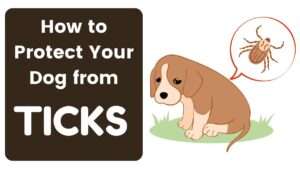

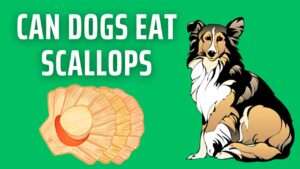

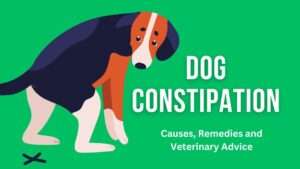

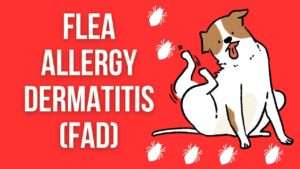





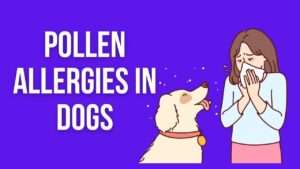


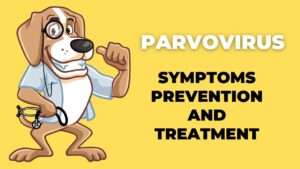

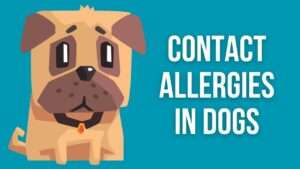





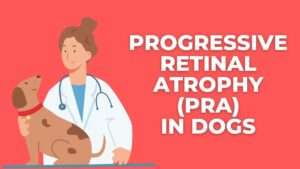
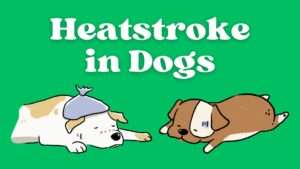
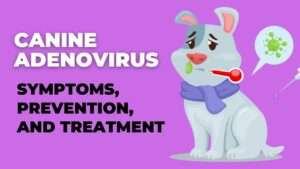







+ There are no comments
Add yours